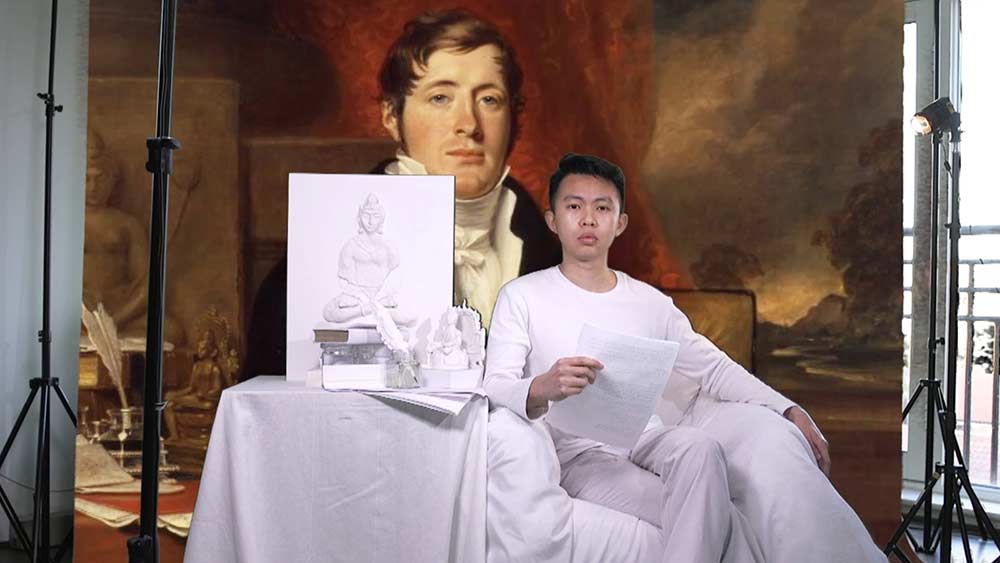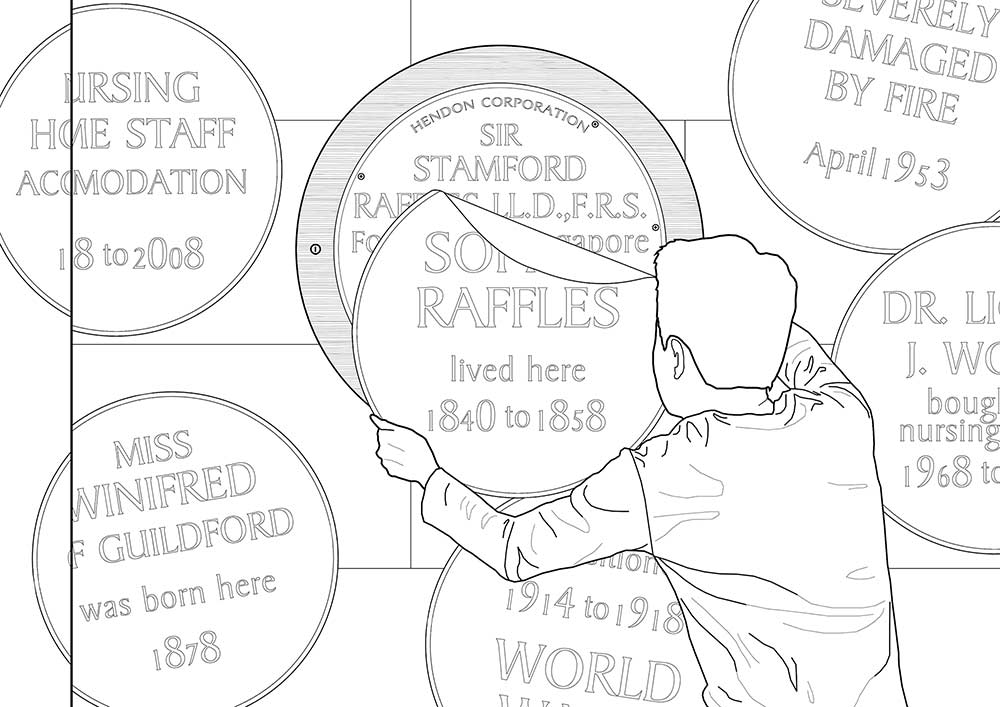- Login
Critical Spatial Practice






“Histories and theories of architecture are embedded in the histories of constructs, oppressions, suppressions, and subjugations.” — Samia Henni, “Colonial Ramifications,” e-flux Architecture, 2018
Washing White critically looks at colonial legacies in Singapore and the United Kingdom through the lens of conserved buildings. In particular, four houses in London serve as starting points: Highwood House, Livingstone Cottage, 45 Berkeley Square, and MacArtney House. These houses have been given statutory protection status, and have a plaque commemorating the respective colonial figures who once lived there.
Using the framework of conservation principles that both Singapore and the UK practise — Maintenance, Repair, Restoration, Renewal, and Alteration — Washing White rethinks how we can approach conservation more ethically. Specifically, the work borrows performance theory and actions of performativity (theorised by Homi Bhabha) to begin proposing ways towards ethical conservation. Washing White also explores critical theory and ethics by Elke Krasny, Jianli Huang, Lysa Hong, and Ragini Tharoor Srinivasan.
This work builds on the ongoing and important work of decolonial, anti-racist, and ethical groups and artists such as Hew Locke, Jimmy Ong, Kara Walker, Race Tuition Centre, Topple The Racists, Who Builds Your Architecture, amongst others.
Washing White is presented as a pairing of text and performance. The text combines personal anecdotes, technical information, performance theories, postcolonial literature, and actions towards ethical conservation. The text challenges current processes of conservation, and proposes that conservation takes into account immaterial relations and networks. A durational performance of a day accompanies the text to further embody these proposals towards ethical actions. The performance presents an iterative process of cleaning, writing, and reclaiming, as a form of critical spatial practice.
Sean Cham is an artist and researcher based between Singapore and London. He completed his Bachelors degree in Urban Studies at Yale-NUS College, and is a graduate from the MA Situated Practice programme at UCL where he took the Site-Writing module. He is currently a PhD student on a Collaborative Doctoral Partnership between Birkbeck and The National Gallery, London, investigating the colonial legacies of the Gallery.
Sean works at the intersections of photography, performance, and installation. His practice is concerned with histories and built environments; particularly considering ideas around authorship, contestation, gaps, migration, and memories. Sean’s works have been exhibited in Ethiopia, Germany, Singapore, South Korea, Spain, and Sweden. His works had been commissioned by M1 Singapore Fringe Festival (2019), The Future of Our Pasts Festival (2019), and NUS Centre For the Arts (2019). He is also a published author — Yesteryears (Math Paper Press, 2017).
In Sean’s practice, he aims to critique the sites and production of historical knowledges — archives, campaigns, heritage buildings, maps, museums, photographs, paintings, and textbooks. He draws on critical acts of writing, performance, and speculation to build on dominant knowledges, platform gaps and buried layers, and challenge existing pedagogies.
[Book] Homi K. Bhabha, The Location of Culture (New York: Routledge Classics, 2004).
[Performance] Nikhil Chopra, Lands, Waters, and Skies (2019), The Met, New York.
https://bagrifoundation.org/nikhil-chopra-2019-2020-artist-in-residenceat-the-met/
[Performance] Loo Zihan, Cane (2012), The Substation Theatre, Singapore.
http://www.loozihan.com/cane2012



































































